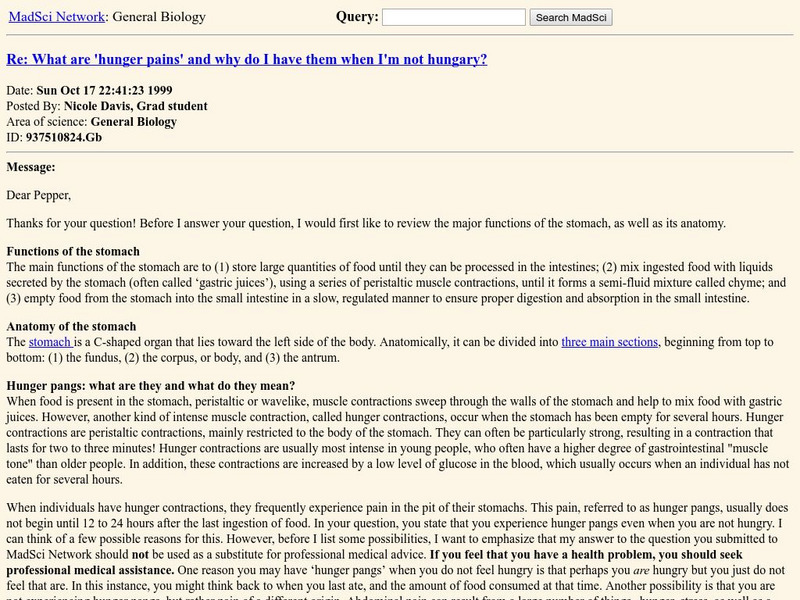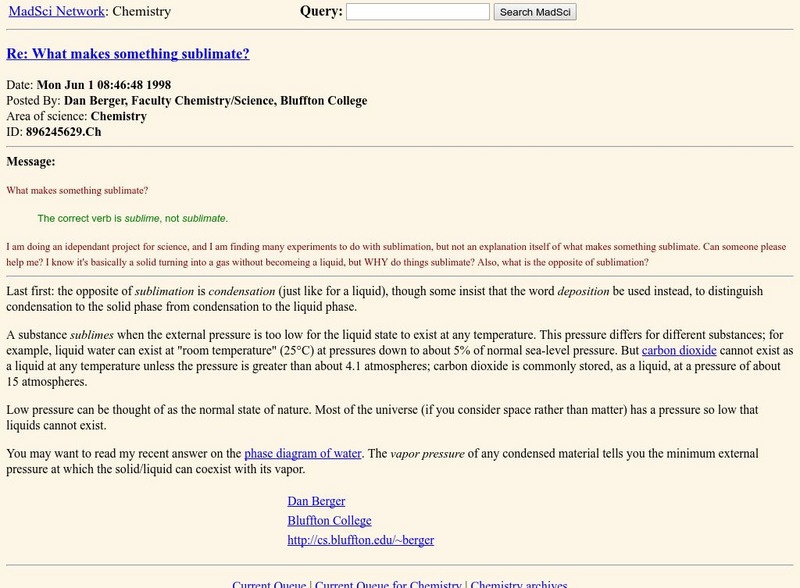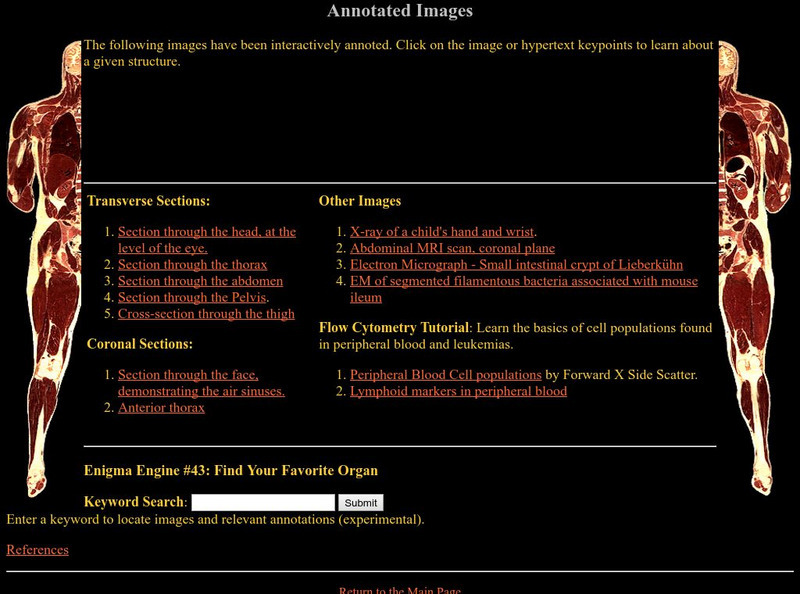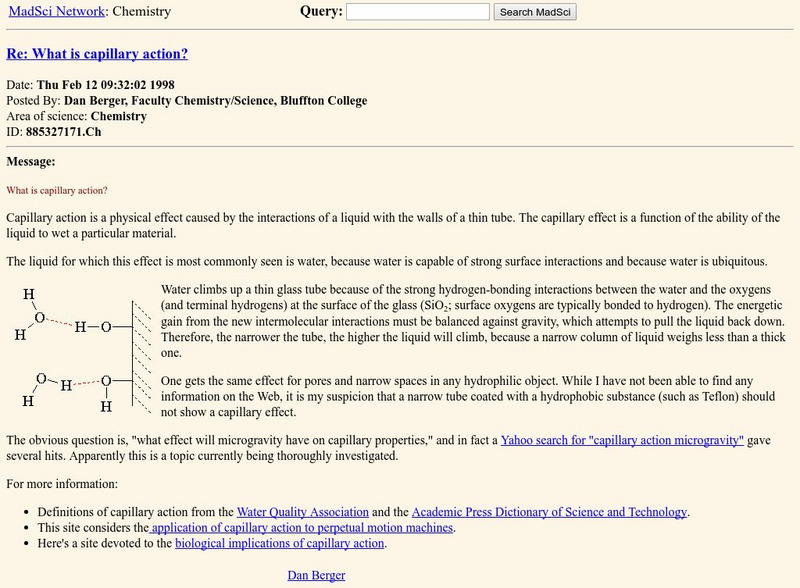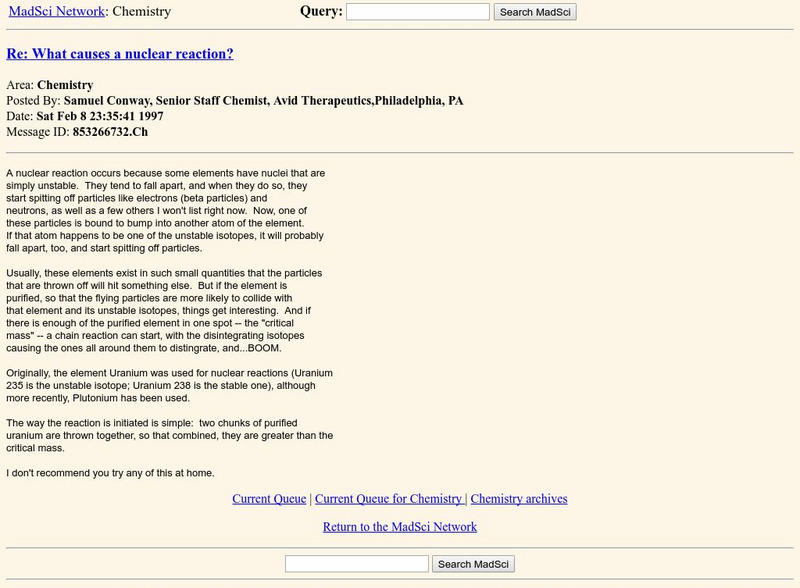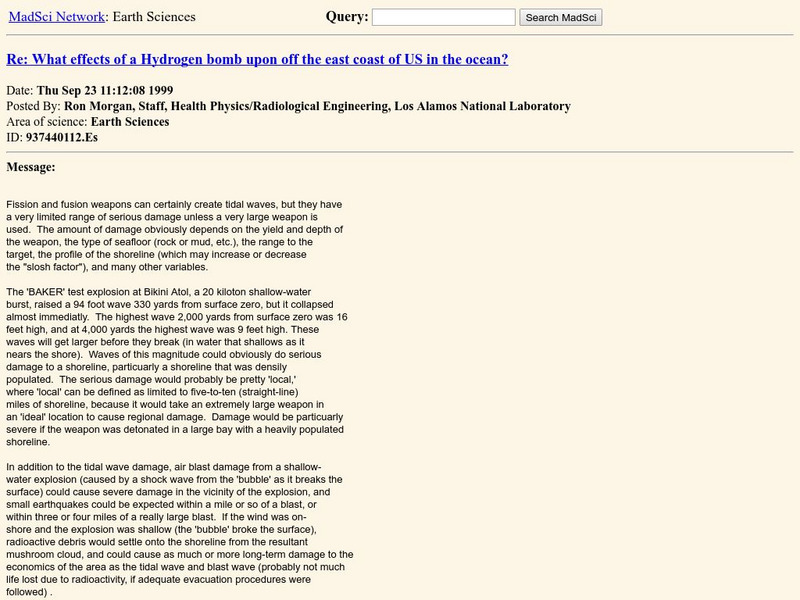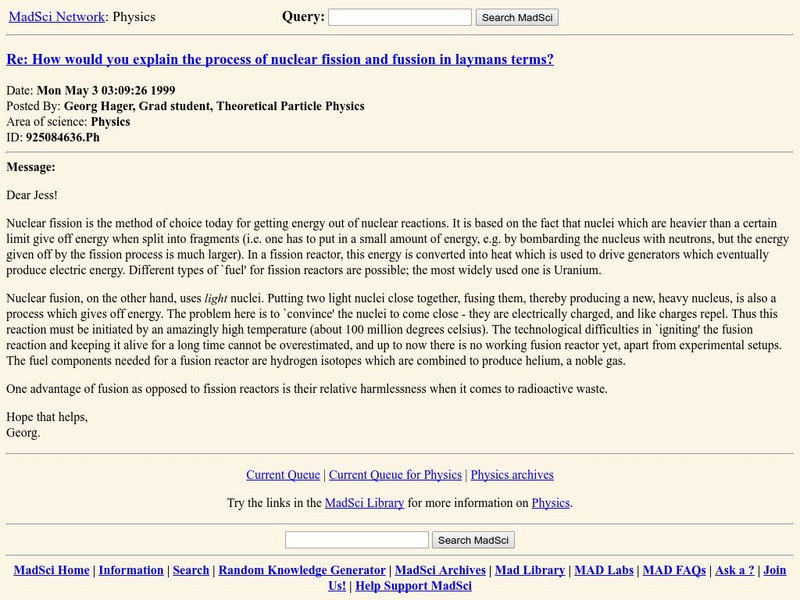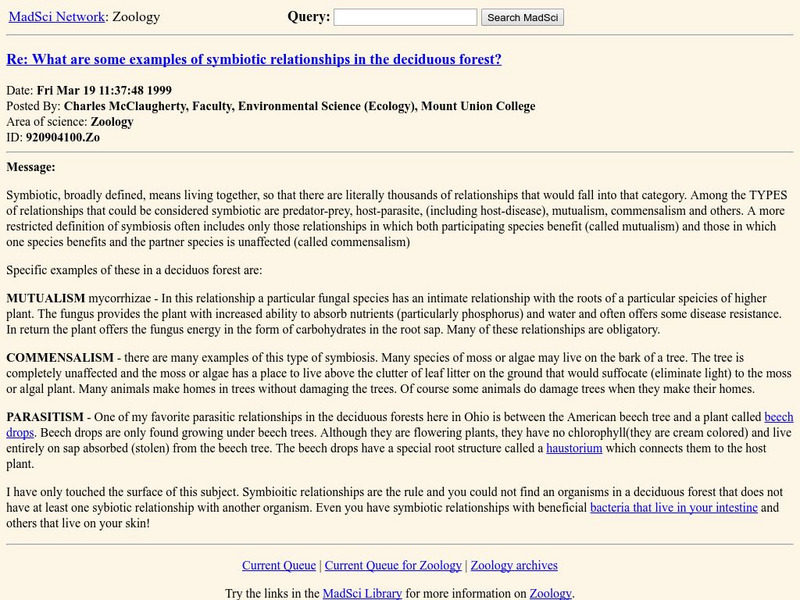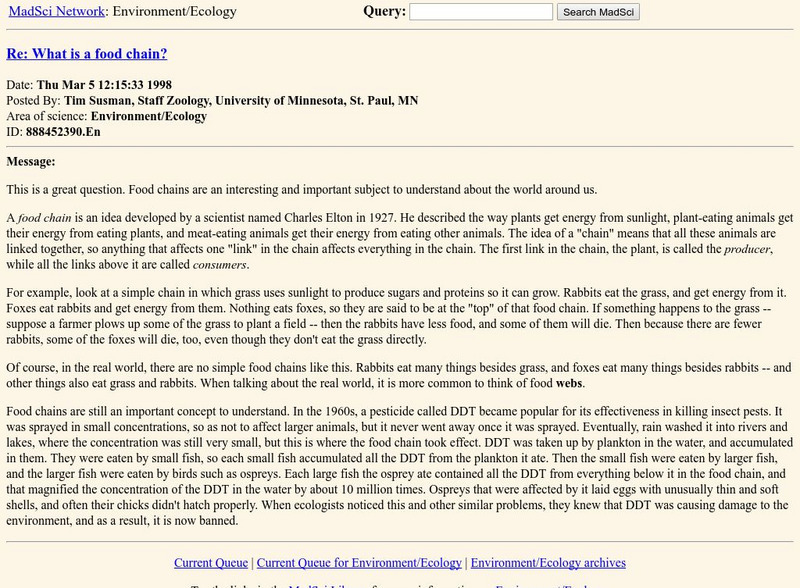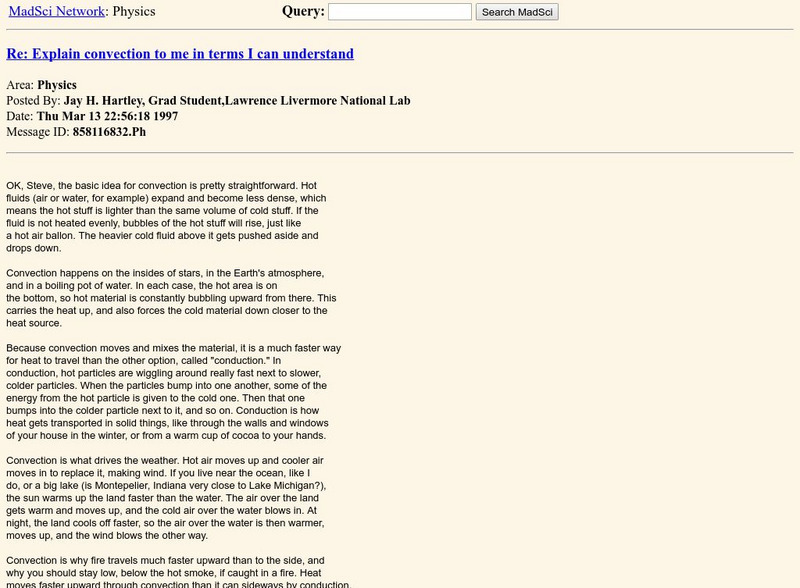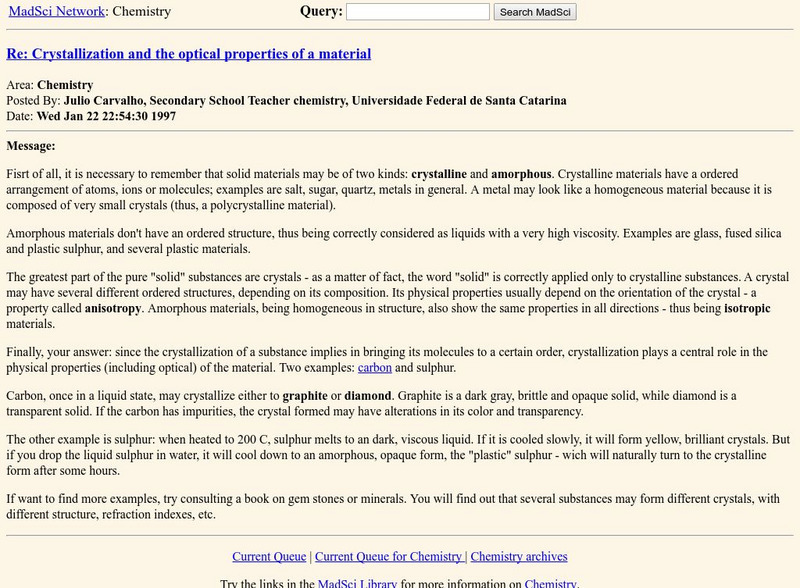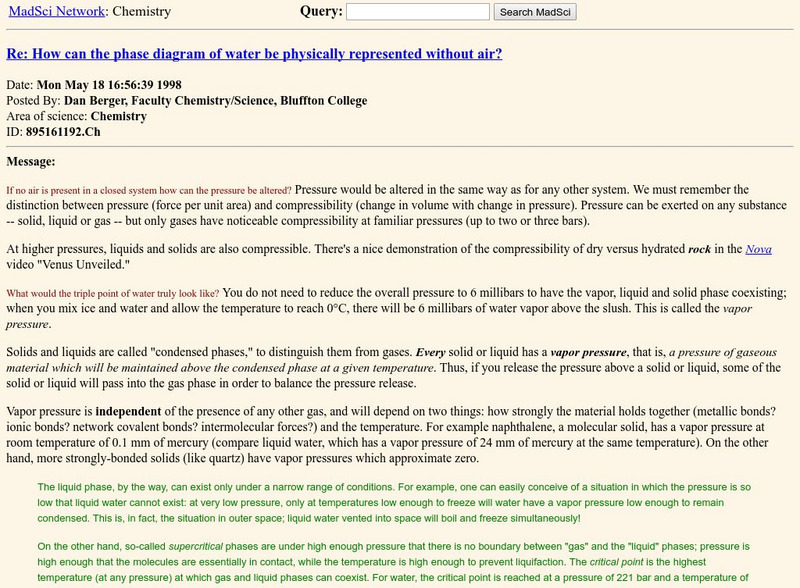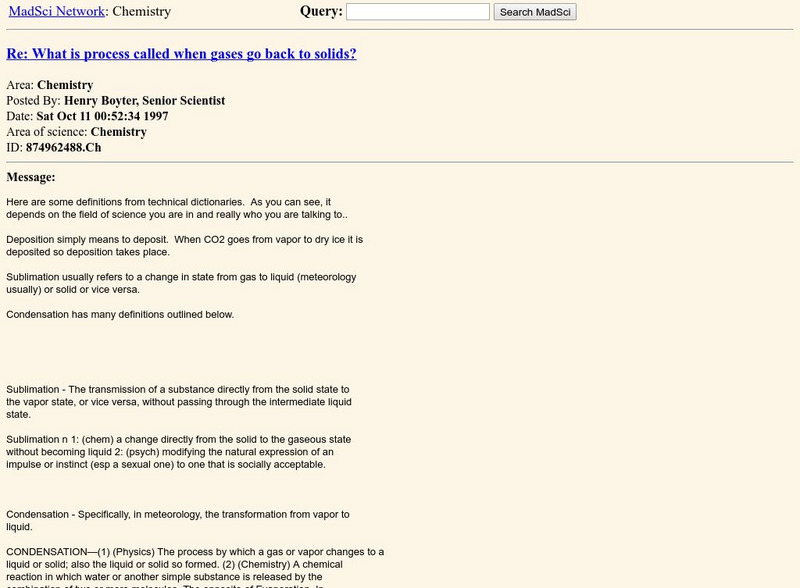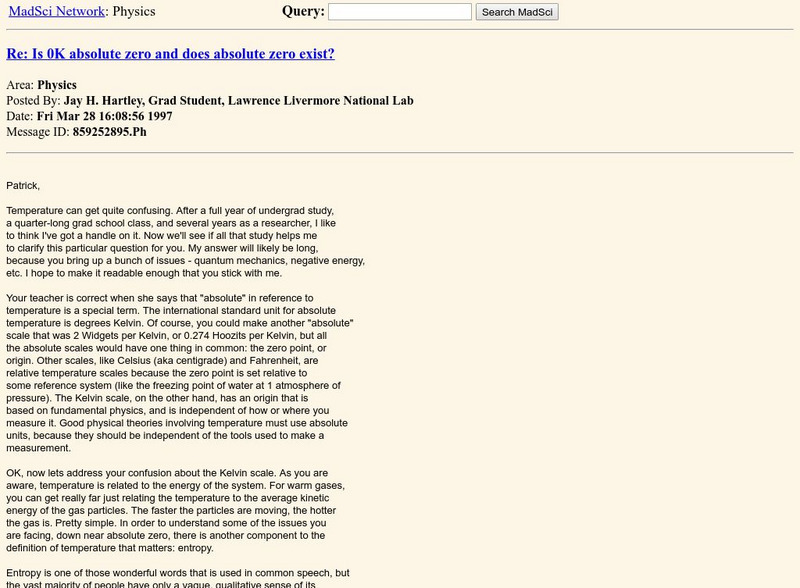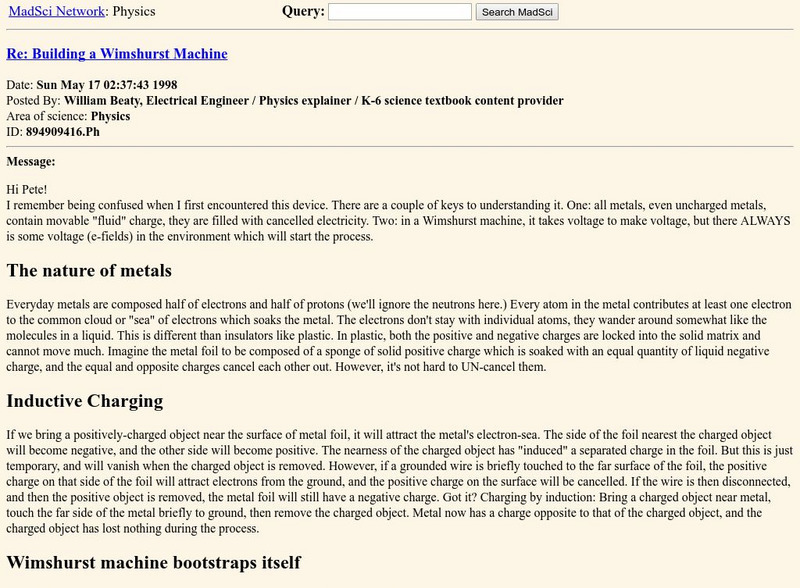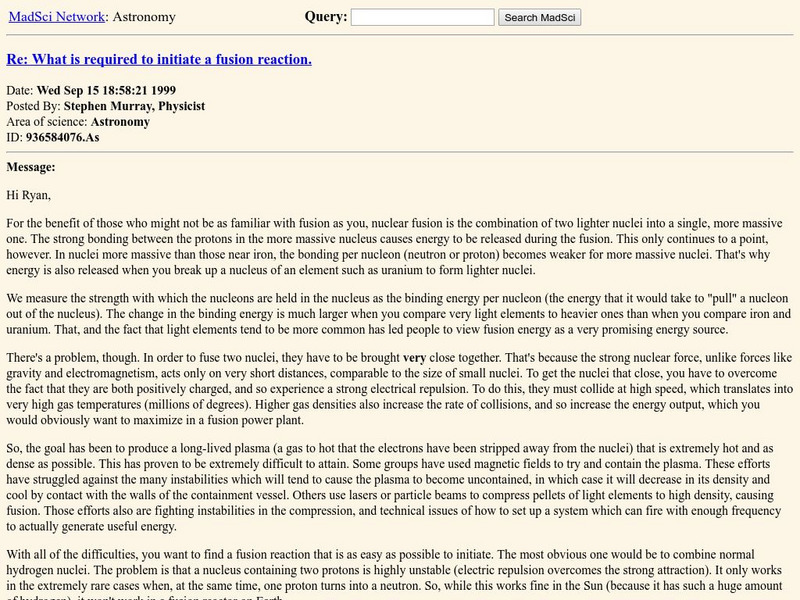MadSci Network
Mad Science: Structure and Function of the Stomach
Gives a brief description of the various structures and functions associated with the human stomach. Provides a link to more in-depth information on the stomach. There is also an explanation of hunger pains.
MadSci Network
The Mad Scientist Network: Chemistry
The question: "What makes something sublimate?" is discussed and explained. Project ideas pertaining to sublimation are suggested.
MadSci Network
Mad Sci Network: Visible Human: Annotated References
A collection of transverse and coronal views of the internal anatomy of the human body. The webpage also has a keyword search for specific organs.
MadSci Network
The Mad Scientist Network: Chemistry/cappillary Action
Capillary action is described. Examples are illustrated. Links to related topics.
MadSci Network
Msn: Why Do Some People Have Problems With Static ?
From the The Mad Scientist Network website, this page uses a question and answer format to discuss the concept of electrostatic induction. The cause of the common occurrence of an electric shock is explained.
MadSci Network
Msn: What Happens in a Nuclear Reaction?
From The Mad Scientist Network web site. Using a question and answer format, this page discusses three types of nuclear reactions - spontaneous decay reactions, nuclear fision reactions, and nuclear fusion reactions. Each reaction type...
MadSci Network
Msn: What Regulates the Speed of Hydrogen Fusion?
From the Mad Scientist Network web site. Using a question and answer format, this page describes the various types of fusion processes and the physical requirements needed for their initiation and sustenance. Factors affecting the rates...
MadSci Network
Msn: What Are the Effects of a Hydrogen Bomb?
From the Mad Scientist Network web site. Using a question and answer format, this page describes some potential effects of a nuclear explosion. The possibilities of tidal waves, earthquakes and radiation-related damages are discussed.
MadSci Network
Msn: How Would You Explain the Process?
From the Mad Scientist Network web site. Using a question and answer format, this page explains the differences between nuclear fusion and nuclear fission. The details of each process are sketched in simple language.
MadSci Network
Mad Scientist Network: How Can a Gyroscope Defy Gravity
Explanation of the seemingly gravity-defying feats of a gyroscope. Focuses on the reason behind its operation. Includes illustrations.
MadSci Network
What Plates Are Colliding to Form the Andes Mountains?
Read the informative and detailed explanation of what plates are colliding to form the Andes Mountains. David Scarboro provides his expert advice to help students understand the answer to this question.
MadSci Network
Symbiotic Relationships in the Deciduous Forest
A brief definition of symbiotic, followed by explanations of mutualism, commensalism, and parasitism.
MadSci Network
Msn: How Does an Air Conditioner or Refrigerator Work?
From the Mad Scientist Network. Using a question and answer format, this page explains the answer to the question "How does An air conditioner or refrigerator work?" The scientific principles which underly their operation and the process...
MadSci Network
Mad Sci Network: Three Decomposers
The MadSci Network answers the posted question by describing three large groups of decomposers: bacteria, fungi and actinomycetes.
MadSci Network
What Is a Food Chain?
Discussion of what makes up a food chain and its significance. Includes some historical perspectives on developing the concept, and on how a pesticide called DDT affected food chains during the 1960's.
MadSci Network
The Mad Scientist Network: Physics
A page from the question and answer section of this useful site. The page responds to the user question: "Explain convection to me in terms I can understand." An excellent discussion of the method of convection.
MadSci Network
The Mad Scientist Network: Chemistry
Using a question and answer format, this page addresses the question: "What effect may crystallization have on the optical properties of a material?" Crystalline and amorphous solids are compared and contrasted; their properties are...
MadSci Network
What Is the Life Cycle of the Sea Snail?
Good description of the molluscan life cycle as a way of answering the question in the title.
MadSci Network
The Mad Scientist Network: Chemistry
The question: "What would the triple point of water truly look like?" is discussed and explained. The phases of matter are described.
MadSci Network
The Mad Scientist Network: Chemistry
The question "What is process called when gases go back to solids?" is discussed in detail. A comparison of the processes of sublimation, deposition and condensation is made.
MadSci Network
The Mad Scientist Network/is 0 K Absolute Zero?
Using a question and answer format, this page explains what is meant by the term "absolute zero." The basis for the Kelvin temperature scale is described. And the relationship between heat or energy and temperature is discussed.
MadSci Network
Mad Scientist Network: Building a Wimshurst Machine
Using a question and answer format, this page is a response to a question on how to build and use a Wimshurst machine. Directions and suggestions for building such a device are given. The principle of electrostatic induction which...
MadSci Network
The Mad Scientist Network: About Nuclear Fusion
Using a question and answer format, this page introduces and explains the idea of nuclear fusion. The hydrogen bomb and its operation is discussed. Other applications of nuclear fusion are described. Short but clear.
MadSci Network
Msn: What Is Required to Initiate a Fusion Reaction?
From the Mad Scientist Network web site. Using a question and answer format, this page provides a thorough discussion of fusion reactions. Fusion and fission are compared and contrasted and the mechanisms which must occur to initiate and...


